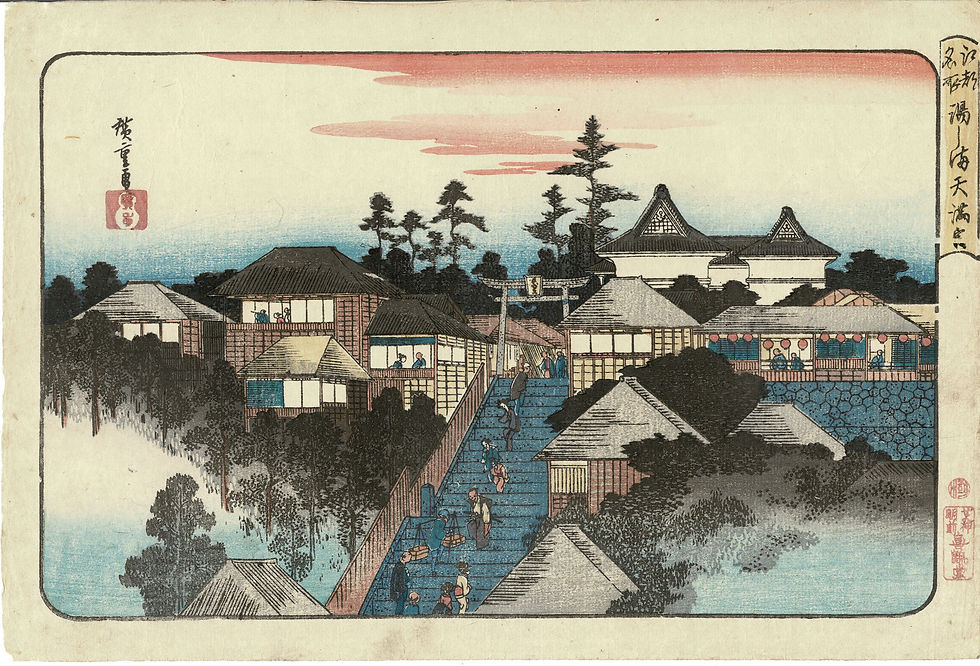Artist: Katsukawa Shunshō
Subject: Rokushu Rokushu pilgrim
Date: 1780 c.
Format: Hosoban
Dimensions: 11 2/8" x 5 5/8"
Condition: Very good impression, moderately faded, very good condition
Illustrated: plate XIV, Shunsho # 44 in A Descriptive Catalog of an Exhibition of Japanese Fgure Prints from Moronobu to Toyokuni by Louis Ledoux. The Grolier Club, 1924
Shunshō - Rokushu/Roku ( six Buddhist sects ) pilgrim
The Six Schools of Nara Buddhism, also known as the Rokushū 六宗 (also Rokushuu/Rokushu), were academic Buddhist sects. These schools came to Japan from Korea and China during the late 6th and early 7th centuries.[1][2] All of these schools were controlled by the newly formed Japanese government of Nara. These schools were installed to mimic and expand upon already existing mainland Asian Buddhist thought.[1]
The schools were installed during the reign of Prince Shōtoku, most likely to increase the power of the expanding government through Buddhist and Confucian doctrine. Because of the government involvement in religious expansion, government funds were used to construct grand temples, statues, and paintings, most notably the Seven Great Southern Temples of Nara. Most of these sects wanted to be the main Buddhist school of the Imperial House of Japan and high officials. Because of this, many of them tried to be appealing to nobility. Many of the themes of these schools delved on advanced level, complicated, almost cryptic, Indian philosophies on the mind and existence. Some of the schools, though, were ideas on the formation and operations of a vihara. Due to the location of the temples constructed for these schools they were also called, The Six Southern Schools of Nara Buddhism.[1] Eventually the increasing power of these schools of Buddhism and their influence in politics started to overwhelm the city of Nara. This forced Emperor Kanmu to relocate the capital, moving it to Heian-kyō (Kyoto). It also directly encouraged the creation of the Tendaischool, founded by Saichō, and Shingon Buddhism, founded by Kūkai.[2]
All six schools shared Gautama Buddha's original teachings of human suffering and his ideas on cause, remedy, and extinction. The six schools differed on expanding on the sub ideas of inter-dependency of phenomena, ultimate enlightenment (nirvana), the non-self (anātman), and the Middle Way.[2] These schools laid the groundwork for the development of Pure Land Buddhism and the emergence of the worship of a distinctly Japanese form of Amitābha, Amida.[3] from Wikipedia






























